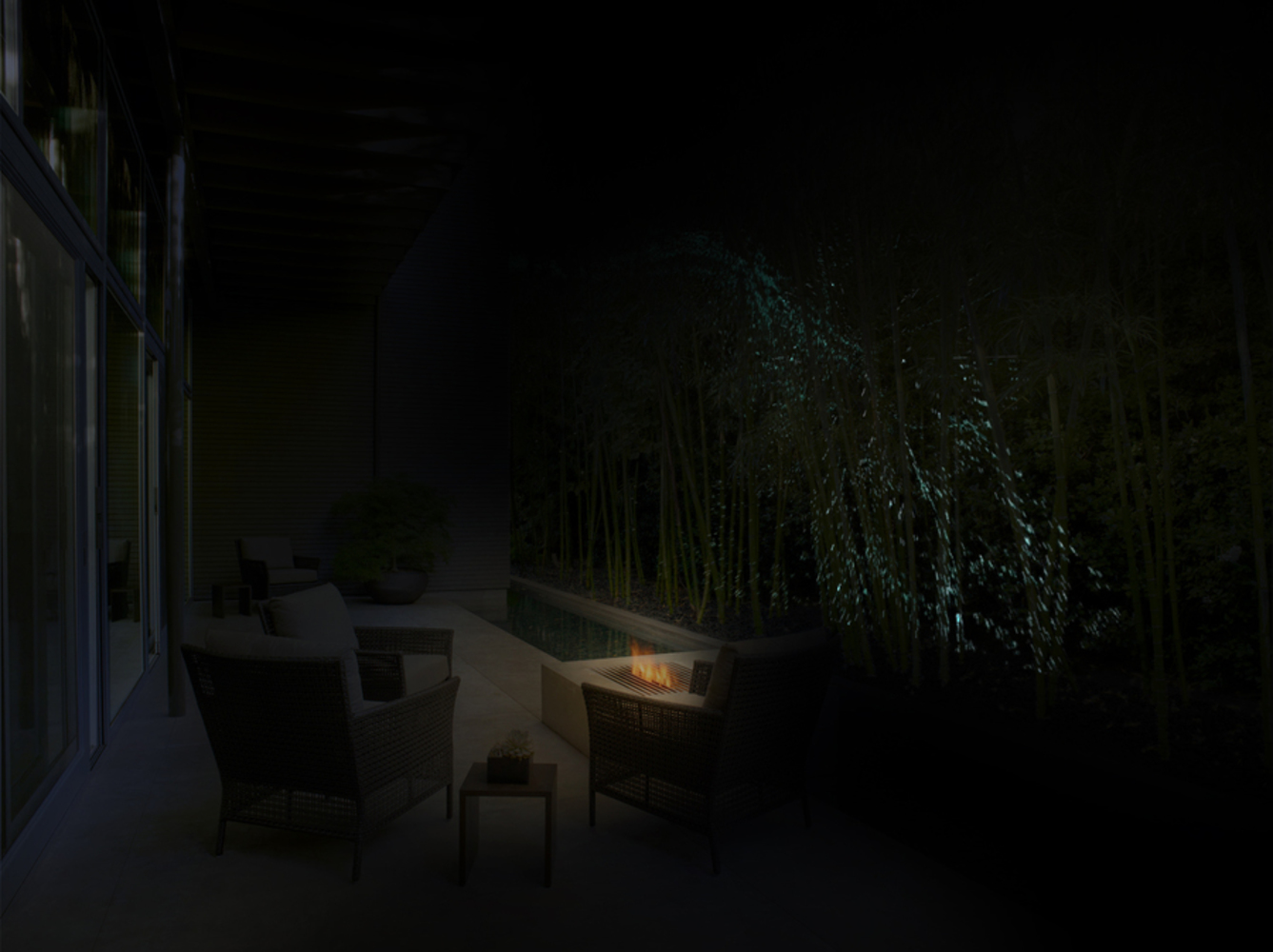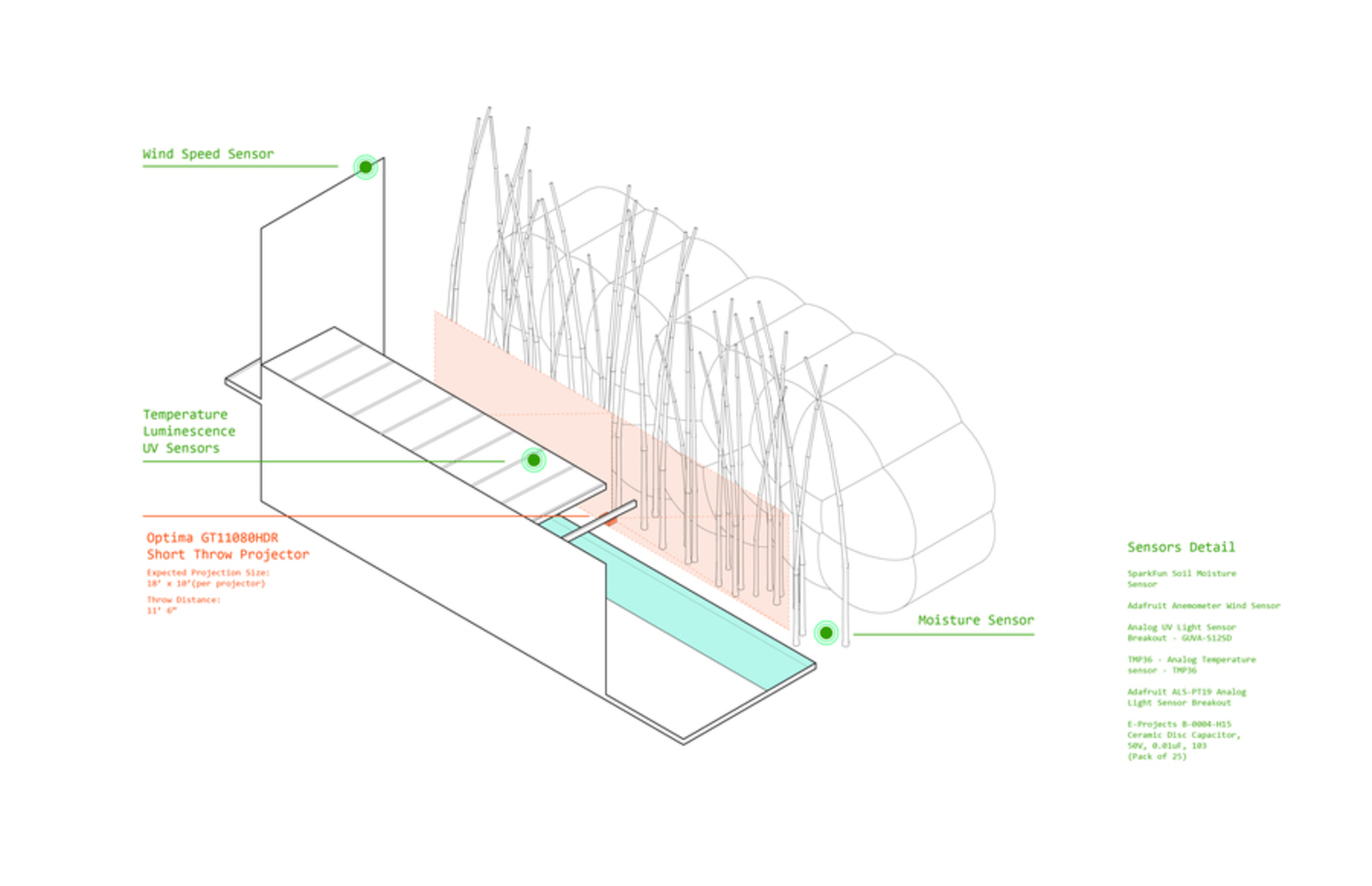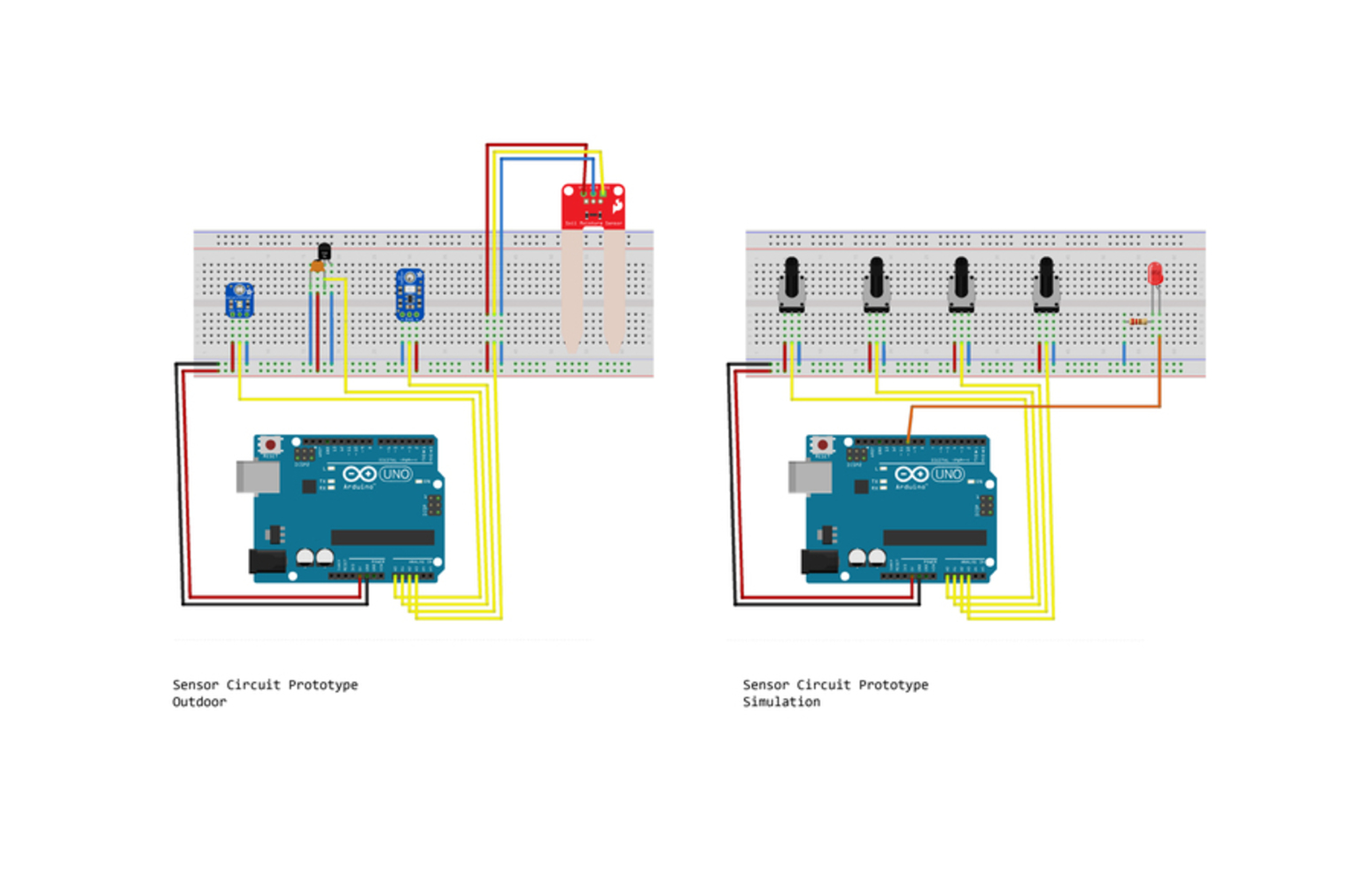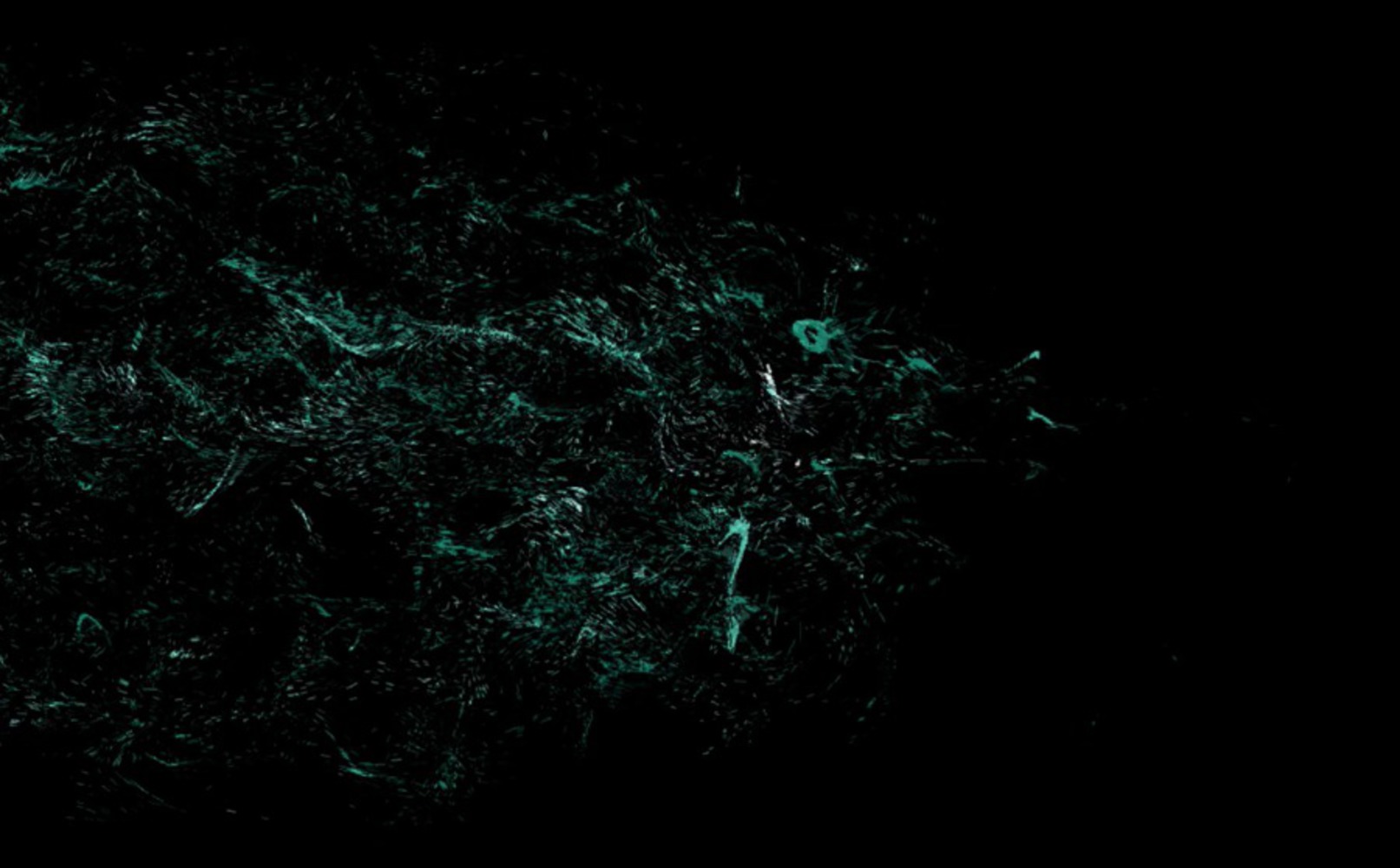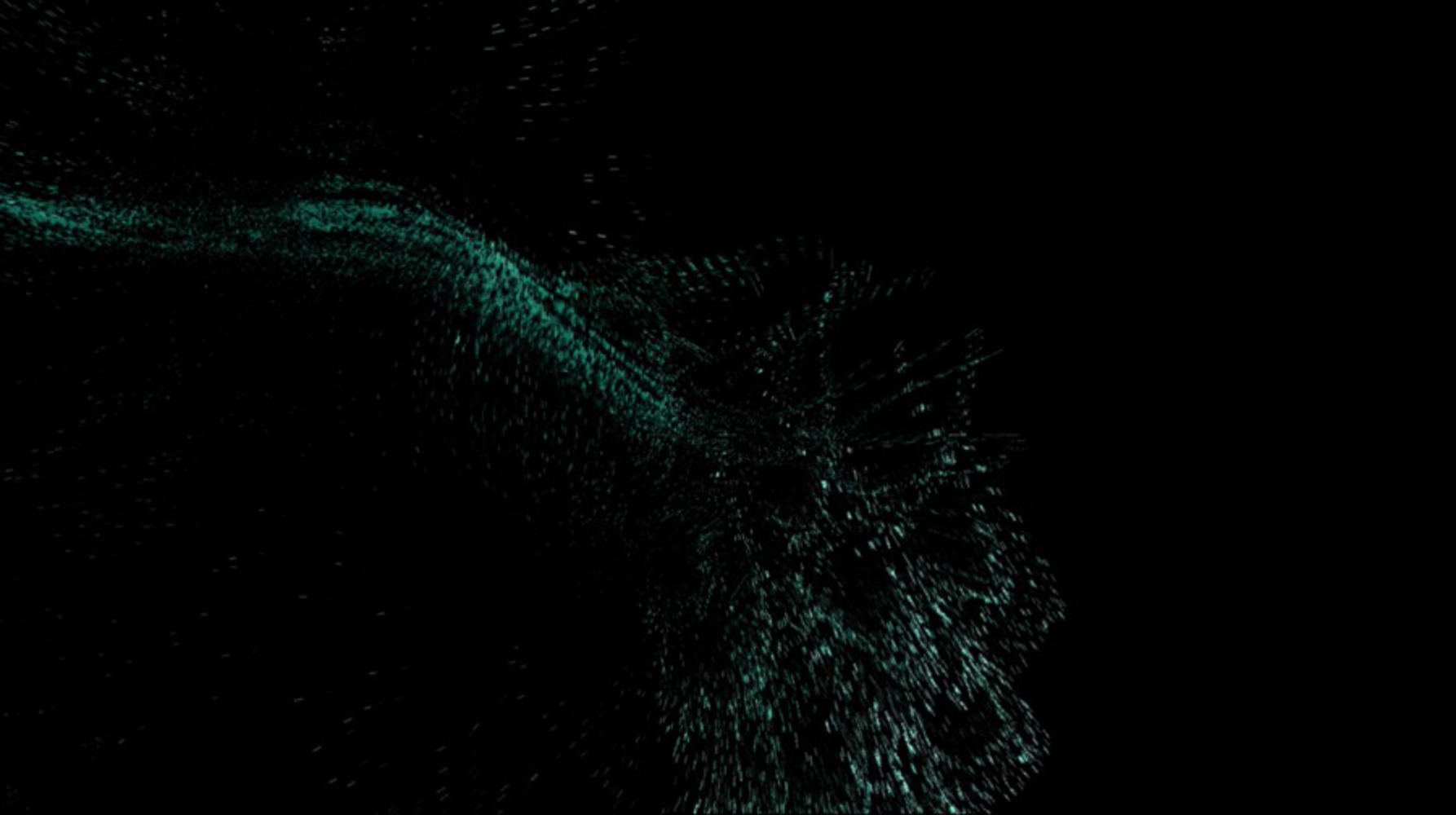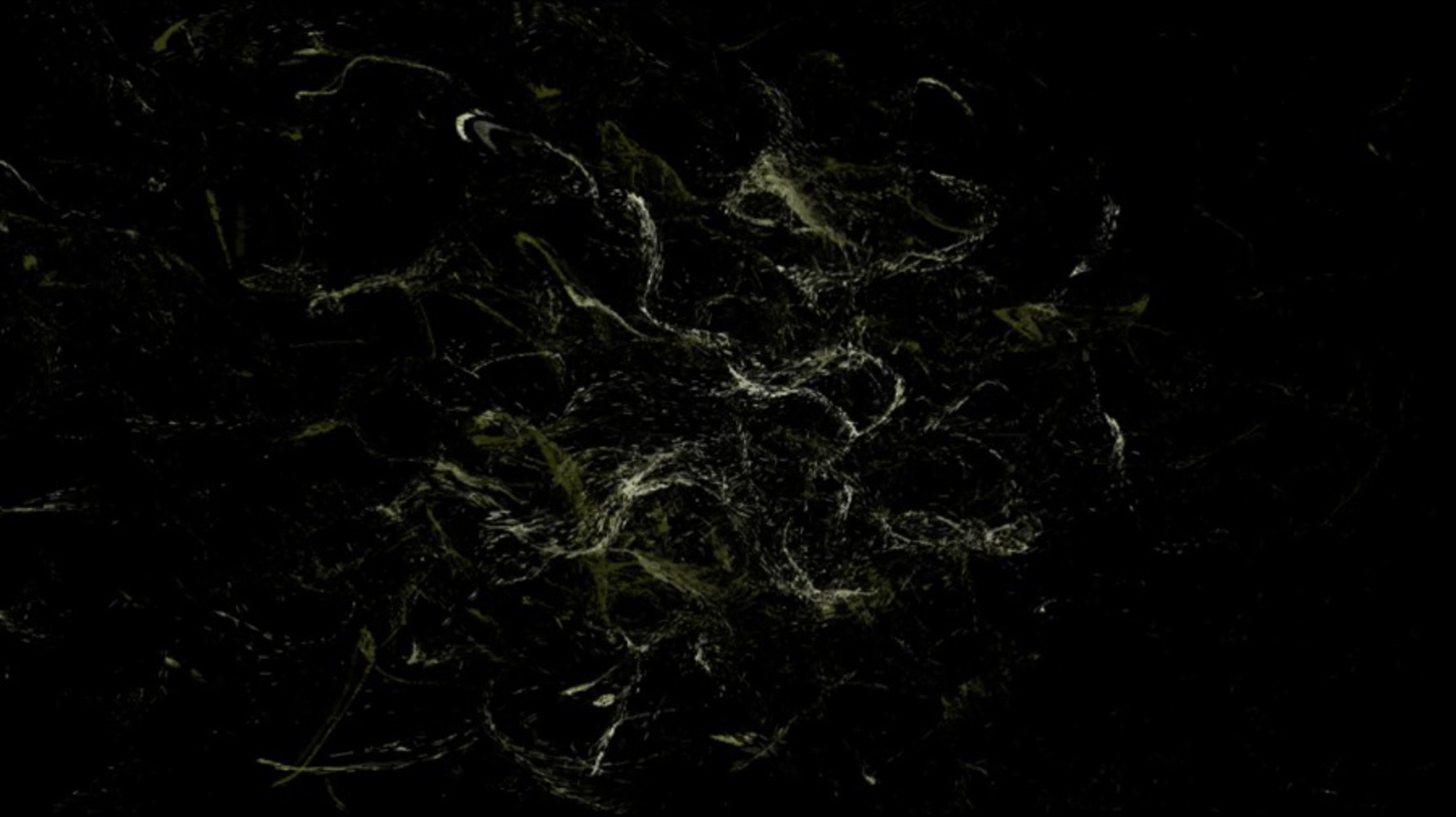"Floating Points" augments the fleeting variables in nature using particle motion. The projected particles fluctuate based on multiple natural variables, including wind speed, soil moisture, temperature, luminescence and UV light intensity, providing a unique visual experience in the garden with each passing night.
Our initial seed of the idea came from emulating a sense of rain to counteract the dry climate of California, where the garden is located in. The idea was further abstracted to inspire a sense of wonder and serenity while watching the motion play out.
The installation is designed to be projected in the bamboo vegetation using two short-throw projectors.
